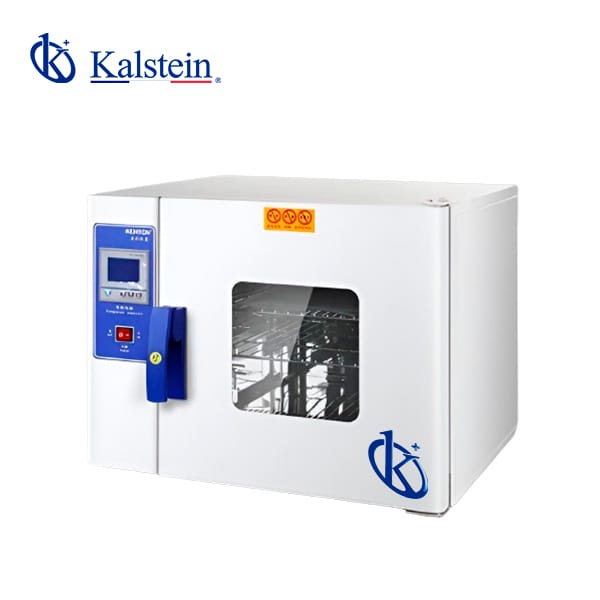Laboratory ovens are essential equipment in any scientific setting, enabling a variety of applications from sterilization to drying and incubating samples. In today’s market, competition among manufacturers is fierce, and choosing the right oven can make a significant difference in the efficiency of laboratory tests and improvements in patient treatment. In this article, we will compare Kalstein’s laboratory ovens with some of their main competitors, highlighting the advantages and disadvantages of each.
If you want to explore the high-end product catalog we have for you at KALSTEIN, visit us at https://kalstein.de/category-product/laboratory-line/ovens/. We assure you that through our easy and feasible online PURCHASE channels, you will find the best prices on the MARKET. We remind you that we, at KALSTEIN, MANUFACTURE high-level Laboratory Equipment for SALE. https://kalstein.de/
Kalstein: Innovation and Reliability
Kalstein has earned a solid reputation in the laboratory equipment market thanks to its commitment to innovation and quality. Their laboratory ovens stand out for their advanced technology and robust design.
Kalstein offers a range of ovens that cater to various needs, from basic models to highly sophisticated units with precise digital control. Temperature uniformity and energy efficiency are two of their main advantages, making them ideal for applications requiring constant and controlled conditions. Additionally, their ease of use and maintenance ensures that laboratory personnel can operate and care for the equipment without complications.
Memmert: German Precision
Memmert is a strong competitor in the laboratory oven market, known for its precision and reliability. Their products are designed and manufactured in Germany, ensuring high-quality standards.
Memmert ovens offer excellent temperature distribution and an intuitive user interface. One of the biggest advantages is their advanced safety system, which protects both samples and equipment. However, the cost of Memmert ovens is often higher compared to other competitors, which can be a disadvantage for laboratories with limited budgets. Despite this, their durability and long-term performance make them an attractive option.
Binder: Versatility and Performance
Binder is another major player in the laboratory oven market, known for its focus on versatility and performance. Their ovens are designed for a wide variety of applications, from research to industrial production.
One of the main advantages of Binder ovens is their ability to maintain high temperature uniformity even under extreme conditions. This makes them suitable for experiments requiring rigorous precision. However, some units can be somewhat complex to operate due to their technical complexity. Additionally, although they are robust and durable, the maintenance cost can be relatively high.
Thermo Fisher: Technological Innovation
Thermo Fisher Scientific is a global leader in laboratory technology, and their ovens are no exception. With a strong focus on innovation, Thermo Fisher offers ovens that integrate the latest technologies to improve the efficiency and precision of laboratory tests.
Thermo Fisher ovens are known for their precise temperature control and user-friendly interface. They also feature additional capabilities like remote connectivity, allowing users to monitor and control the ovens from anywhere. However, this advanced technology comes with a high price tag, which can be a barrier for some laboratories. Furthermore, the sophistication of their systems may require additional training for personnel.
Esco: Energy Efficiency
Esco stands out in the market for its commitment to energy efficiency and sustainability. Their laboratory ovens are designed to minimize energy consumption without compromising performance.
One of the most notable advantages of Esco ovens is their eco-friendly design, which reduces long-term operating costs. Additionally, they offer excellent temperature uniformity and durable construction. However, the availability of models may be limited compared to other manufacturers, and some advanced features may not be available on all units. Despite these limitations, their focus on sustainability makes them an attractive option for laboratories concerned with the environment.
Comparison of Advantages and Disadvantages
Below is a comparative table summarizing the main advantages and disadvantages of each of the mentioned laboratory ovens:
|
Manufacturer |
Advantages |
Disadvantages |
|
Kalstein |
Advanced technology, energy efficiency, easy to use and maintain, excellent cost |
Precise units may not be available in some countries |
|
Memmert |
High precision, advanced safety system, uniform temperature distribution |
High initial cost, higher investment compared to others |
|
Binder |
High temperature uniformity, versatile applications |
Complex operation, relatively high maintenance cost |
|
Thermo Fisher |
Precise temperature control, advanced technological features |
High price, requires additional training for personnel |
|
Esco |
Energy efficiency, eco-friendly design, reduced operating cost |
Limited model availability, advanced features not available on all units |
In conclusion, choosing the right laboratory oven depends on the specific needs of each laboratory and their budget constraints. Kalstein offers a solid option with its combination of advanced technology, energy efficiency, and ease of use. However, other brands like Memmert, Binder, Thermo Fisher, and Esco also have their unique advantages that may be more suitable for certain contexts. By considering factors such as precision, cost, versatility, and sustainability, laboratories can make an informed decision that will enhance efficiency in laboratory testing and contribute to improved patient treatment.

